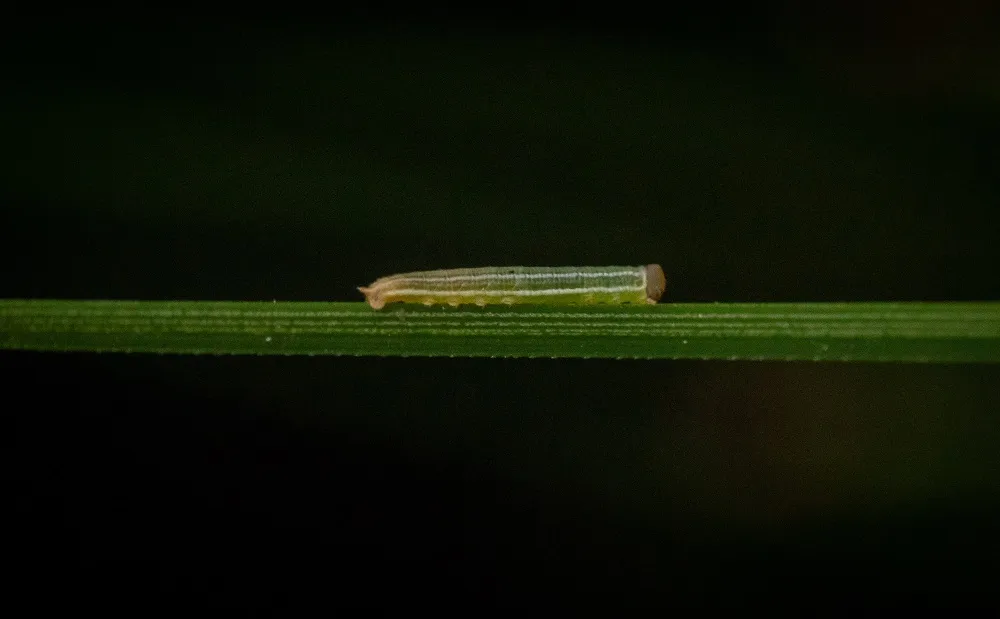Two peat bogs in Manchester and Cheshire will become home to large heath butterflies for the first time in a century.
More than 150 large heath butterfly caterpillars hatched in mid-August at Chester Zoo under the care of the butterfly team.
The zoo is working in partnership with the Lancashire Wildlife Trust to raise and release these butterflies.
“Few people realise that the butterflies we might see in our gardens, forests and mosslands across the UK are heavily under threat, with many species disappearing from their last strongholds throughout England,” says Ben Baker, team manager of the Chester Zoo butterfly team. “It is an amazing privilege to play a part in embarking these rare caterpillars on their journey, returning the species to their historic home.”

The large heath butterfly has suffered from a serious decline in England and Wales, and is now found at only a few sites. It is still widespread in parts of Ireland and Scotland.
It is found in wetland areas, such as peat mosses and bogs. Over the last two centuries, these wetlands have been drained and converted into farmland, causing the disappearance of this butterfly in many areas.
The reintroduction plan is part of Manchester Mosses Species Reintroduction Project, led by the Lancashire Wildlife Trust, which aims to reintroduce a number of locally extinct plants and insects to nature reserves in the region.

The caterpillars hatched from eggs laid by six gravid (pregnant) large heath butterflies that were collected from a stable population elsewhere in Lancashire.
The species is listed under Schedule 9 of the Wildlife and Countryside Act 1981, which means that any scientific work or breeding from wild individuals must be licenced.
Conservationists followed IUCN guidelines under a licence from Natural England to ensure that the donor population was not damaged, and Chester Zoo are licenced to keep the species in captivity.
The freshly hatched caterpillars are only a few millimetres long and live in a specially designed habitat in the zoo.
They will hibernate over winter as caterpillars, then pupate during early summer, and will be released as adults onto Astley Moss in Manchester and Risley Moss in Warrington.

“Although miniscule in size at the moment, we’ll watch them grow and grow in our care over the course of the year, wishing them farewell in the spring,” adds Baker.
The two mosses have undergone 20 years of habitat restoration and have been assessed as suitable for reintroduction of the large heath butterfly. Further work will take place to ensure enough suitable plants are available.
“We are starting on the two most suitable sites in the Manchester Mosses and hope to get a stable population at these locations,” says Mark Champion, project manager at the Lancashire Wildlife Trust.
“We then plan to use these as other local sites become more suitable. We are looking at a ten-year programme at least.”
Main image: Large heath butterfly bred at Chester Zoo previously released in Lancashire.
